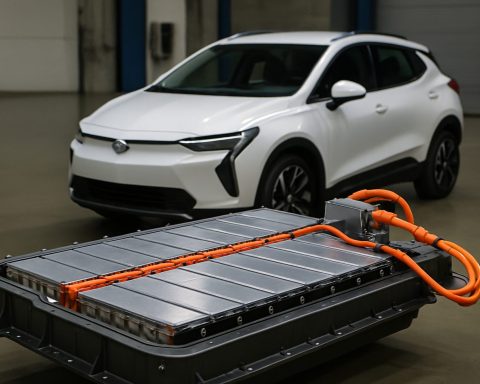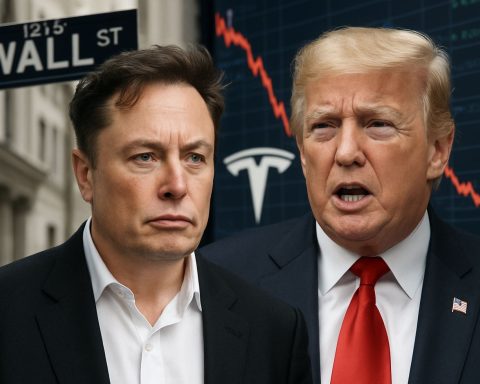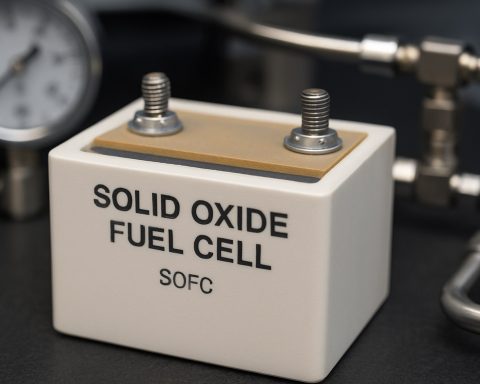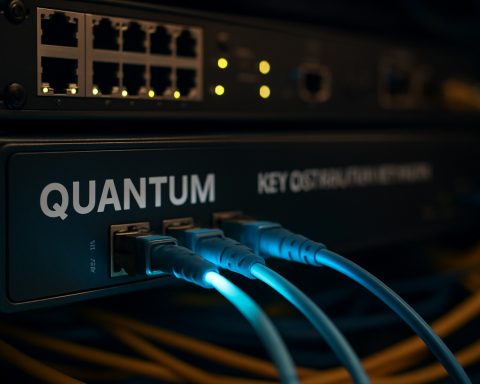- Heron Power, led by former Tesla executive Drew Baglino, is pioneering next-generation transformers to support increasing energy demands.
- The startup focuses on domestic manufacturing, using solid-state transformers with semiconductors for greater efficiency.
- Heron Power aims to fill the demand for advanced energy solutions as AI data centers require more electricity.
- The company seeks $30-$50 million in Series A funding, with significant investor interest due to Baglino’s proven track record.
- Challenges include economic variability and skepticism about executing ambitious plans, but Baglino’s Tesla success inspires confidence.
- The initiative aligns with a global shift towards sustainable energy, promising to address electricity distribution bottlenecks.
- Heron Power’s progress highlights the critical role of innovation in the future of energy consumption and distribution.
Beneath the hum of modern cities, a silent revolution is gearing up to power the future: next-generation transformers, crafted for a rapidly electrifying world. At the helm of this new frontier in energy technology is Drew Baglino, a former driving force behind Tesla’s innovative energy ventures. Baglino, who spent nearly two decades steering the engineering and development of Tesla’s electric vehicle batteries and power systems, is now channeling his expertise into Heron Power, a startup poised to reshape how we think about electricity distribution.
Baglino’s vision is as ambitious as it is necessary. As AI data centers multiply, consuming power at unprecedented rates, the demand for efficient transformers skyrockets. These critical components modulate voltage, ensuring a seamless flow of electricity from grids to consumers. Yet, the U.S. heavily imports these devices, leaving a gap that Heron Power aims to fill with domestic manufacturing.
Heron Power is seeking to raise between $30 and $50 million in Series A funding, with Capricorn Investment Group reportedly showing keen interest. This infusion of capital not only promises to propel Heron Power’s transformative mission but also signals investors’ faith in Baglino’s capabilities—so much so that some insiders suggest any venture he undertakes is bound to draw attention.
Headquartered within the United States, Heron Power sets itself apart by developing solid-state transformers. These cutting-edge devices eschew traditional materials like copper and iron, opting instead for semiconductors—a move that presents a competitive edge in efficiency and design within the market.
However, challenges loom. Investors are wary of the hefty valuation predictions amidst fluctuating economic climates and remain skeptical about the startup’s ability to seamlessly execute its ambitious plans. Yet, Baglino’s track record at Tesla for engineering success offers a solid foundation for optimism.
The broader narrative speaks to a pivotal era in energy consumption—a world transitioning towards sustainable electricity which demands innovation and scalability. The stakes are high, as experts predict a three- to five-fold increase in global electricity generation and consumption to meet this evolving need. Heron Power, by championing cutting-edge technology, promises to be a key player in this transition, tackling bottlenecks and driving the electrification of our modern world.
Heron Power’s journey underscores a vital truth in today’s world: the future of energy hinges on bold innovations and those daring enough to lead them. In Drew Baglino, we find a protagonist capable of rewriting the rules, one transformer at a time.
The Silent Revolution: How Next-Gen Transformers Could Power Our Future
Insights on Next-Generation Transformers and Heron Power
As the world moves towards a future powered by electricity, Drew Baglino’s Heron Power is at the forefront of this transformation. Formerly an influential force at Tesla, Baglino’s endeavor into next-generation transformers focuses on domestic production and innovative designs to support the rising electricity demand, especially with the exponential growth of AI data centers.
What Are Solid-State Transformers?
Solid-state transformers (SSTs) are innovative devices that utilize semiconductors rather than conventional materials such as copper and iron. This shift offers several advantages:
– Increased Efficiency: Semiconductors allow for more precise voltage modulation, reducing energy loss during distribution.
– Improved Design Flexibility: SSTs can be more compact and versatile, accommodating various configurations that traditional transformers cannot.
– Enhanced Control Capabilities: Integrated with smart grid technology, SSTs can more effectively manage electricity loads and integrate renewable energy sources.
Industry Trends and Market Forecasts
As global electricity needs rise, driven by advancements in technology and the transition to renewable energy, the transformer market is projected to grow significantly. According to industry forecasts:
– The global transformer market size is expected to expand at a CAGR of approximately 6% from 2021 to 2028.
– The shift to advanced transformers is supported by governmental policies favoring domestic manufacturing and innovations in energy efficiency.
Challenges and Controversies
While Heron Power’s vision is promising, the endeavor is not without its challenges:
– Funding Risks: Although investors like Capricorn Investment Group show interest, securing the necessary $30-$50 million for Series A funding is critical for scaling operations.
– Economic Uncertainty: Fluctuating market conditions can impact investor confidence and valuations, posing potential hurdles for growth.
– Execution of Plans: Converting theoretical advancements into practical, scalable solutions remains a significant challenge.
Real-World Use Cases
Solid-state transformers are particularly beneficial in several applications:
– Urban Environments: Their compact size and reliability make SSTs ideal for densely populated areas requiring high energy efficiency.
– Renewable Energy Integration: SSTs facilitate the incorporation of solar and wind power into the grid, supporting a sustainable electricity infrastructure.
Actionable Recommendations
For stakeholders aiming to engage with or invest in Heron Power’s vision:
– Invest in Research and Development: Allocating resources towards innovation in SST technology can yield high returns in efficiency and market leadership.
– Monitor Industry Trends: Staying informed on governmental policies and market shifts can enable timely strategic decisions.
– Build Strategic Partnerships: Collaborating with technology and energy companies can bolster Heron Power’s position in the evolving energy landscape.
For more information on cutting-edge technology in energy, visit Heron Power.
In summary, Heron Power’s thrust into the realm of solid-state transformers under Drew Baglino’s leadership signifies a pivotal advancement in the world of energy distribution, poised to address both present challenges and future demands.











